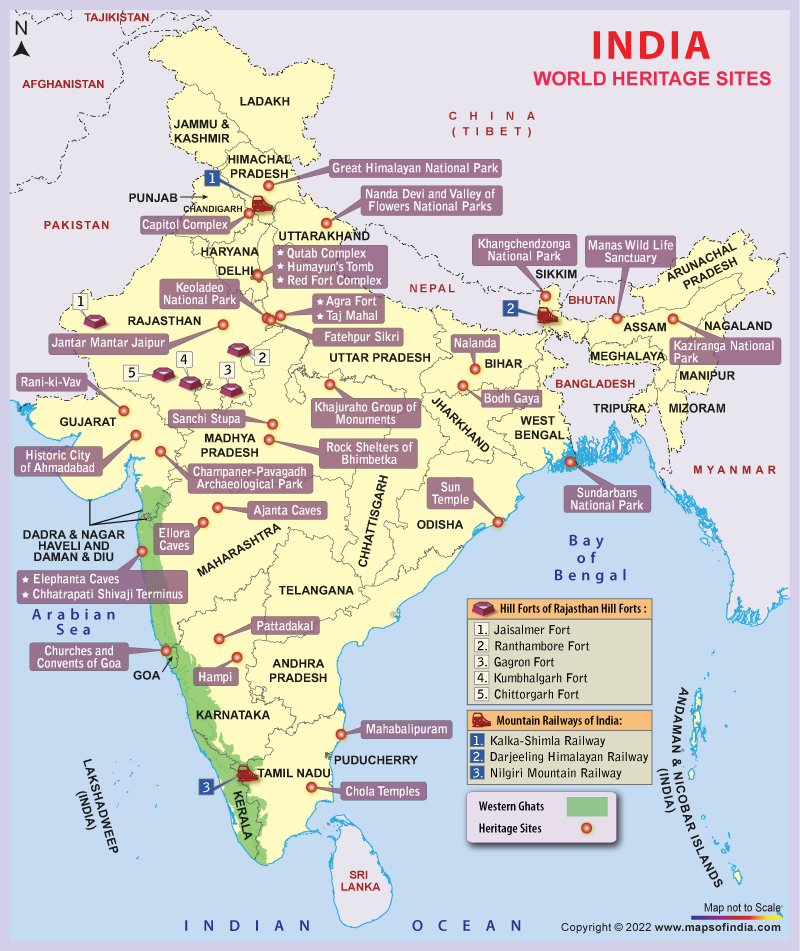Context
- The Maharashtra government has submitted a tentative “serial” nomination seeking the World Heritage Site tag for 14 forts from the era of 17th century Maratha king Chhatrapati Shivaji Maharaj on the theme of Maratha Military Architecture in Maharashtra.
- The serial nomination was forwarded by the Archaeological Survey of India to UNESCO through the Ministry of Culture. UNESCO has accepted the nomination in Tentative Lists of its World Heritage Site.
- According to the World Heritage Convention’s operational guidelines, a tentative list is an “inventory” of properties a country believes deserves to be a World Heritage Site. After UNESCO includes a property in the Tentative List, that country has to be prepare a nomination document that will be considered by the UNESCO World Heritage Committee.
- A World Heritage Site is a location with an “outstanding universal value”. This signifies “cultural and/or natural significance which is so exceptional as to transcend national boundaries and to be of common importance for present and future generations of all humanity”.
The 14 Forts in Maharashtra’s proposal
Raigad Fort
- Originally called Rairi, it is built on a large wedge of a hill in the Sahyadris, separated from the main range by a ravine. The capital fort of the Maratha Empire, it was rebuilt for the coronation of Chhatrapati Shivaji Maharaj.
Rajgad Fort
- Hill fort in Pune district, capital of the Maratha Empire under Chhatrapati Shivaji for almost 26 years, before the capital moved to the Raigad Fort.
Shivneri Fort
- Near Junnar in Pune district. Shivaji’s birthplace , it consists of 7 gates. It is an example of Bahamani/ Nizamshahi architecture providing a backdrop to narrative of guerrilla warfare.
Torna Fort
- Fort in Pune district, captured by Shivaji in 1646, when he was 16, and marked the beginning of the Maratha empire.
Lohagad
- Close to Lonavala, it overlooks one of the most picturesque valleys and is believed to have been built in the 14th century. It is an example of Maratha hill fort architecture until Peshwa period.
Salher Fort
- One of the highest forts in the Sahyadris, located in Dolhari range of Nashik. The fort witnessed a key battle in 1672 between Marathas and Mughals.
Mulher Fort
- In Nashik; one of three forts situated on a hill, flanked by Mora to the east and Hatgad to the west. The surrender of Mulher ended the third Maratha War.
Rangana Fort
- In Kolhapur, bordering Sindhudurg. Aurangzeb tried to conquer it along with Bhudargad and Samangad in his Deccan campaign, did not succeed.
Ankai Tankai Forts
- In Nashil district, Ankai and Tankai are separate forts on adjacent hills, with a common fortification wall.
Kasa Fort
- Popularly known as Padmadurg, built on a rocky island off coast of Murud, and provided a base for naval military operations.
Sindhudurg Fort
- Built by Chhatrapati Shivaji Maharaj in 1668, This sea fort is considered a masterpiece in military defence..
Alibag Fort
- Popularly known as Kulaba Fort, it was chosen as one of the forts to be modelled as a naval base by Chhatrapati Shivaji.
Suvarnadurg
- Built on an island, it was repaired and strengthened by Shivaji Maharaj in 1660.
Khanderi Fort
- Khanderi, officially named as Kanhoji Angre Island in 1998, is 20 km south of Mumbai. Built in 1679, Khanderi Fort was the site of many battles between Shivaji Maharaj’s forces and the navy of the Siddhis.

UNESCO World Heritage Sites Summary Notes: Click Here
